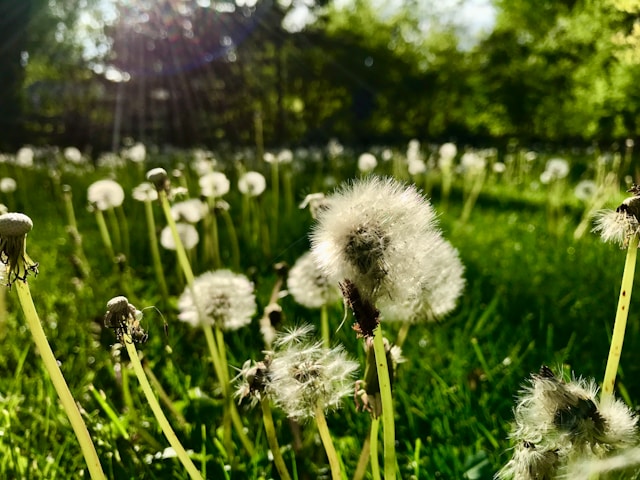Few things are more frustrating to a homeowner than a lawn overrun with weeds. Those pesky invaders can pop up out of nowhere, spread fast, and take over even the most well-maintained yards. The good news is that with a bit of consistency and the right lawn care strategy, you can take control. If you’ve ever wondered how to stop weeds from growing and keep your grass looking lush, this guide is for you.
Understanding what causes weeds to flourish and how to address them at the source is the key to success. With the right approach, weed control doesn’t have to mean constant chemicals or endless hours on your knees. Let’s explore the best ways to prevent lawn weeds and build a strong, healthy yard that keeps them at bay.
Understand Why Weeds Grow in the First Place
Before jumping into weed control tips, it helps to understand why weeds take over in the first place. Weeds thrive in conditions where your lawn is weak or stressed. Poor soil quality, improper watering, compacted soil, and inadequate mowing can all contribute to a lawn that’s vulnerable to invaders.
Most weeds are opportunistic. They take advantage of bare patches, thin turf, and imbalanced nutrients. So instead of only treating the weeds, focus on addressing the conditions that allow them to flourish. A healthy lawn is your best defense.
Start with Healthy Lawn Practices
The foundation of weed prevention is consistent, thoughtful lawn care. Mow your grass at the correct height, usually about 2.5 to 3 inches for most turf types. This taller grass shades the soil, making it harder for weed seeds to germinate and grow.
Water deeply but infrequently to encourage strong root development. Frequent, shallow watering leads to weak grass and gives weeds like crabgrass and clover a chance to thrive. Fertilize appropriately for your grass type and local climate to ensure your lawn has the nutrients it needs to stay thick and vigorous.
Use Pre-Emergent Weed Control
One of the most effective ways to prevent lawn weeds is to stop them before they even sprout. Pre-emergent herbicides work by forming a barrier in the soil that prevents weed seeds from germinating. This is especially helpful against annual weeds like crabgrass and foxtail.
The best time to apply pre-emergent weed control is in early spring when soil temperatures reach around 55°F (about when forsythia starts blooming). You can also apply it in the fall to target cool-season weeds like annual bluegrass. Just make sure not to seed your lawn right after application, as pre-emergents can also prevent grass seed from growing.
Spot Treat Existing Weeds
Even with the best prevention strategy, some weeds will still make an appearance. When that happens, spot treating is often more effective, and less harmful to your lawn, than blanket herbicide applications. Use selective herbicides for broadleaf weeds like dandelions and clover, which will kill the weed without harming your grass.
For more stubborn invaders, like nutsedge or bindweed, you may need specialized treatments. Always read the product label carefully and apply on a calm, dry day to avoid drift or wash-off.
Maintain Proper Lawn Density
A thick, dense lawn is a natural weed barrier. When grass grows tightly together, it leaves little room for weeds to get a foothold. Overseeding especially in the fall is a great way to maintain and improve turf density.
Core aeration also helps by loosening compacted soil and allowing air, water, and nutrients to reach the roots. These two techniques combined can significantly strengthen your lawn’s ability to outcompete weeds on its own.
Mulching and Edging Matter
Don’t underestimate the power of good mulching and clean lawn edges. Applying mulch around trees, shrubs, and flower beds helps block sunlight and suppress weed growth. It also improves soil moisture and health over time.
Edging your lawn regularly keeps invasive grasses and weeds from creeping into your garden beds. It also adds a polished, well-maintained look to your landscape. Use a manual or powered edger along walkways, driveways, and garden borders to create clear separation lines.
Try Natural and Organic Weed Prevention Methods
If you prefer a more eco-friendly approach, there are several natural weed control methods that can be effective for small-scale problems. Household vinegar, when applied directly to young weeds, can dry them out. Boiling water and salt can also work in areas like cracks in sidewalks or driveways.
However, natural methods can be non-selective and may damage nearby plants, so use them carefully. For a gentler solution, look for organic weed control products made from natural ingredients like corn gluten meal, which can also act as a mild pre-emergent.
Stay Consistent with Lawn Maintenance
One of the most important weed control tips is consistency. Lawn care for weed prevention is not a one-and-done task—it’s an ongoing routine. Stick to a seasonal schedule that includes fertilizing, mowing, watering, overseeding, and applying weed control products as needed.
Regularly inspect your lawn for early signs of weed activity. The sooner you spot and treat problem areas, the easier it is to manage. By staying proactive, you’ll avoid the stress of full-blown infestations and enjoy a lawn that looks good all year round.
Final Thoughts
Preventing weeds from taking over your lawn doesn’t have to be an uphill battle. With proper planning, regular maintenance, and a combination of smart techniques, you can keep your yard healthy, thick, and weed-free. The key is to address the root causes of weed growth, not just the symptoms.









